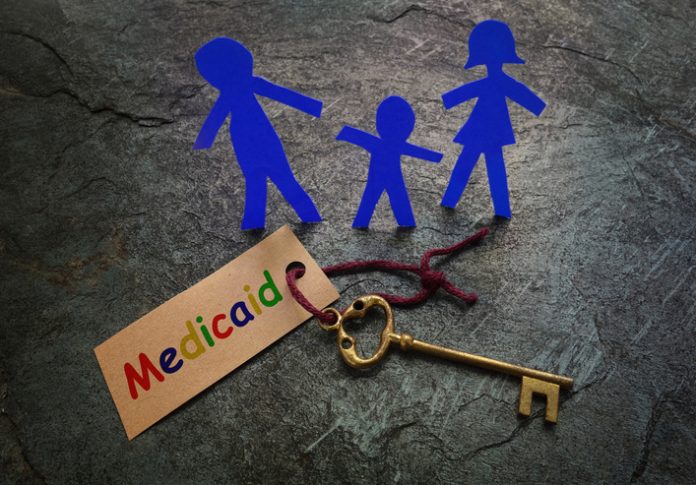Instead of purchasing health insurance directly for the needy, the federal government should consider giving enrollees cash to allow them to purchase their own health care.
That is the argument being made by one of the nation’s most highly regarded health care economists, Amy Finkelstein of the Massachusetts Institute of Technology.
“It is time to recognize that cash is more effective than insurance,” writes Finkelstein in the New York Times on May 17. “The evidence indicates that for the low-income recipients of these programs, cash transfers will provide a greater bank for the government’s buck.”
The Math
Finkelstein notes that while expanding health insurance is a “laudable goal,” so is giving enrollees direct cash payments. Doing both, however, is not fiscally realistic. Medicaid is already a $600 billion a year program.
“This was 10 times the amount spent on the largest cash transfer program, the earned-income tax credit,” writes Finkelstein.
Finkelstein acknowledges while it is difficult to measure what would be more valuable to low-income individuals, cash or health insurance, studies have shown one thing. The benefit from purchasing health insurance is about 40 percent of what taxpayers pay for it, about $5,500 a year. That’s because people without insurance get care in other ways, either through write-offs by the hospitals when someone can’t pay a bill or other resources, many of which are already paid by taxpayers.
“In other words, from the recipient’s perspective, the alternatives are $5,500 in cash or only about 40 percent of that – $2,200 – in health insurance benefits, on top of the care they were already receiving,” writes Finkelstein.
While health insurance expansion has helped hospitals better manage charity care and families avoid overwhelming medical bills, even saving lives, direct cash can provide the same benefits as well. Finkelstein says we only have to look at the studies on wage subsidies that show how they lift “families out of poverty, increase economic self-sufficiency, and improve their health and well-being.”
One Proposal
One health care reform proposal already includes a major overhaul to Medicaid in the form of cash payments. The American Health Care Plan, released by The Heartland Institute, which co-publishes Health Care News, proposes to give upend Medicaid altogether by giving people in need of care not government insurance but cash accounts they would control.
The proposal, based on the idea that state and federal governments are paying $8,800 a year for each person in Medicaid of the Children’s Health Insurance Plan (CHIP), recommends giving enrollees, including children, $6,000 a year that they can stash in lifetime accounts. There would be provisions that enrollees would have to enroll in direct primary care and purchase a low-cost plan to cover hospitalization and longer-term treatment.
“The best strategy for fixing Medicaid is to infuse the same free-market forces that have helped to reduce costs and spur innovation in other markets into this broken government program,” write Justin Haskins and S.T. Karnick, the plan’s authors.
The Moral Case
There is not just an economic but a moral argument that can be made in giving cash payments to the needy, says Charles Silver, co-author of Overcharged: Why Americans Pay Too Much for Health Care, an adjunct scholar at Cato Institute, and law professor at University of Texas School of Law.
“Helping the needy is a moral imperative, especially in the case of children, persons with serious birth defects, and others who bear no responsibility for their plight. To satisfy the imperative, however, one must not only want to help; one must know how to help,” Silver told Health Care News.
Politicians rarely know how to help the needy in effective ways, says Silver. “Their priorities are influenced by irrelevant considerations, such as how to satisfy the many interest groups that seek to influence and benefit from public welfare policies,” said Silver. “By contrast, needy people know which goods and services will help them most and, when given cash, can focus single-mindedly on making their lives better. They can purchase housing, food, utilities, school supplies, health care—whatever they need most. In-kind welfare programs often supply goods and services that meet poor peoples’ needs poorly.
Too Much Freedom?
There is the concern, however, that people might squander cash payments and not do what is necessary to protect themselves and become a bigger burden on society.
“Cash transfer programs must be designed with care,” said Silver. “The Earned Income Tax Credit provides a good working model. The evidence shows that these transfers encourage recipients to work—because only employed people get them. And because recipients work more, they gain experience that increases their future earning potential and build retirement benefits through the Social Security program. Their children also far better off as a result of improved living conditions, better food and education, and better role models.
Studies of spending habits report that poor people spend money in the same ways that others do. They buy food, clothing, housing, transportation, and so forth. Some may fail to buy insurance for health care expenses, but those who do will often have other materials needs that are more pressing. They won’t be squandering money, in other words.”
Silver says if there is concern that squandering money could be a widespread problem, there are two ways to deal with it. “First, we can use a portion of the funding that Medicaid receives to purchase catastrophic care coverage (also known as Major Medical) for the entire population or identified subgroups,” said Silver. “These policies are less expensive than others because they don’t cover routine services or goods. Second, we can put Medicaid funds into health savings accounts that limit the uses to which dollars can be put.”
The AHCP does propose limiting expenditures from lifetime accounts until health care needs are met. It also includes incentives for individuals to work or train to achieve independence.
Internet info:
Justin Haskins, S.T. Karnick, “The American Health Care Plan,” The Heartland Institute, April 12, 2021: https://www.heartland.org/publications-resources/publications/the-american-health-care-plan-2




















